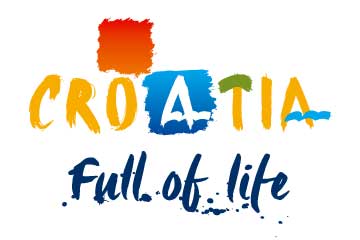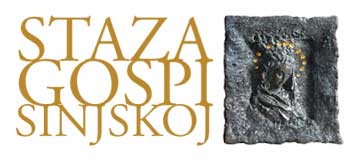Folk Customs
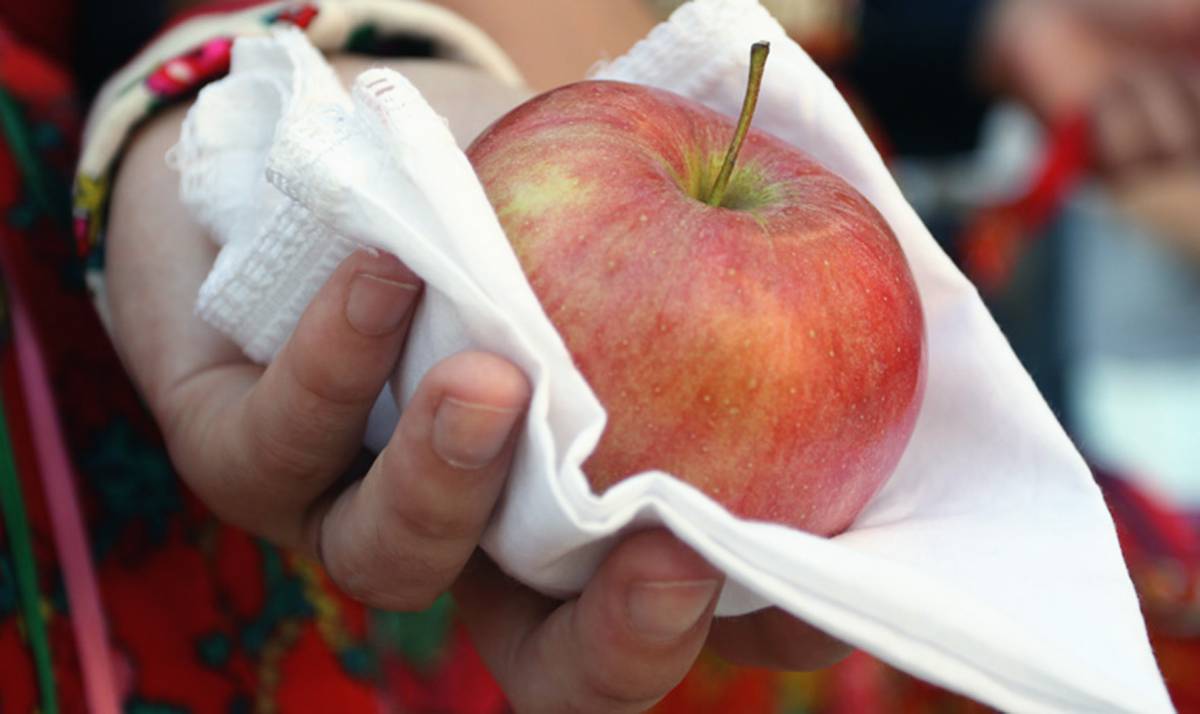 Boris Filipović Grčić
Boris Filipović Grčić Life Cycle Customs
Birth-related Customs
Not so long ago, pregnant women were not spared from working hard on farms. A mother-in law or a village midwife used to help them while giving birth at home, by the hearth. Only after the Second World War did women start to give birth to their babies in maternity hospitals. The most important birth-related custom was the babine, an occasion on which a woman and her newborn baby were visited by women from the woman's family. In this way, the custom of babine symbolised a family-social ritual through which a newborn was accepted into a family. The same goes for baptism, in the context of which the institution of godparenthood was considered important. For generations, families used to be related through godparenthood, a custom which has barely survived to the present day.
Engagement and Wedding Customs
The young used to meet on different occasions, at church, celebrations and fairs, or when they would go to draw water from wells, etc. An interesting occasion when young people would meet certainly was the so-called gonjanje (chasing), an initiation custom equally important for both girls and boys fit for marriage. The gonjanje would take place when girls grazed their sheep. On that occasion, young men would pursue all the girls pretending that they were running away. Some of them, however, would try to run away for real, since there were violent boys. It should be emphasised that at the gonjanje everything was allowed except for sexual relations. In some cases, however, this would happen precisely for the reason that some young men were violent.
Another important engagement custom included the sijelo and sjedenje, or silo and sidenje (sitting). On this occasion, a prospective bride was visited by young men, one of which was to be chosen as her future husband. The couple was then considered to be in a serious relationship that would eventually lead to marriage. They were said to be sitting, that is, their relationship was referred to as the sijelo.
The role of parents was, of course, considered significant in choosing daughter a husband and son a wife, but the rest of the family elders used to have a voice in this as well. What also mattered was a financial situation so the most popular were girls with no brothers, called the dotarice (girls with large dowries). It was even better if a girl was the only child. For both girls and boys equally, it was considered important that the eldest sister and the eldest brother marry first.
The decision to get married was of course followed by the established traditional patterns. What a prospective bridegroom had to do first was to ask a girl's father for her hand in marriage. He was accompanied on that occasion by a male member of the family, his father or uncle. They used to be said to go for the prsten or prstenovanje (ring, ringing of his fiancée) since it was a formal engagement. As was the custom in some places, the bridegroom-to-be would bring shoes together with the engagement ring, as a condition and a symbol of accepting the girl into her new family. This custom has been preserved to the present day, as can be seen on the wedding itself when the bride's shoe is stolen in order for the best man to pay for it. After the engagement, the bridegroom's father would go to the family house of his future daughter-in-law. This is called the ugovor (agreement) or jabuka (apple), as he would bring an apple with coins in it, asking in person the girl's hand for his son in marriage.
A few days later, a prospective bride would be visited by her future mother-in-law. The visit that a bridegroom's mother pays to her future daughter-in-law is called the kolač (cake), since she used to bring with her the pogača, brown round wheat bread, which the girl would then share with her friends.
The prospective bride and bridegroom would eventually visit a parish priest in order to be registered for the napovidi (notices). This means that the priest was obliged to announce to the fellow villagers their wedding on the following church service. The custom has persisted under the same name to the present day.
The customs described in brief can be considered a prelude to the approaching wedding ceremony. As the wedding day was approaching, the girl would normally take care of her dota (dowry), the daily necessities that she would bring with herself to her marital home – bedlinen, cutlery and crockery, chairs etc. The bride's dota depended on her parents' financial situation. The custom that a bride brings a dowry at marriage has been preserved to the present day.
As for the wedding procession in the area of the Dinarides, it is interesting to notice that it is military-like, which can be seen in the names of members of the wedding procession, the wedding guests. Their number depended on the financial situation of the parents of the bride and her groom, but there could be five of them at least. At the head of the wedding procession there is the prvinac (the first), and immediately after him comes the čauš, whose duty is to amuse the wedding guests. The čauš is followed by the barjaktar (the standard-bearer) carrying a tricoloured flag, at the top of which there is an iron cross with apples fitted on or to it. The barjaktar used to be a young man, and marching in the procession, he would stop at every crossroads in order to make a symbolic cross with the flag, in this way protecting both the wedding and the wedding procession from the spell of witches. There was indeed the popular belief that crossroads were places where witches danced. The barjaktar is followed by the stari svat (the bridegroom's chief attendant), who is in charge of the procession and the rest have to obey him. The stari svat used to be an elder member of the bridegroom's family, the bridegroom's father or uncle.
Finally, at the end of the procession there are the bridegroom or the gjuvegija, the two best men, the two djeveri (the bridegroom's brother and/or his best friend) led by the djeverbaša, and together with them comes a girl called the jenga (bridesmaid). Arranged in this way, the wedding procession makes its way towards the bride's house in order to fetch the bride. Talks used to take place in front of her house. The guests on the bride's side take the girls out of the house while the djever, the stari svat or the best man bargains with the bride's brother, or her cousin if she does not have a brother, over buying up the bride. It was customary to take two or three girls out of the house before the bride herself appeared, for whom the djever or the best man would pay an amount of money. The custom of symbolic buying up has survived to the present day. After the church wedding, it was a custom to return to the bride's parental home for a feast, and then to start for the bridegroom's house, the bride's new home. It was the bride's duty to perform a few symbolic actions in order to prove that she belonged to the new home and family. We could only mention throwing an apple over the roof of the house and kissing the threshold before she crosses it to enter her new home. In some places, these customs have been observed even to the present day.
The wedding guests would then eat, drink and celebrate. At the wedding feast the stari svat would propose a toast to the bride and the groom, whereas nowadays it is not uncommon for the bridegroom's mother to have that privilege. After the feast, the bride would go to the bedroom accompanied by one of the djeveri and the jenga, or the best man alone, whereas the rest of the wedding guests would sing, make noise and shout. The bride's chastity used to be highly esteemed. It should be emphasised that the girl's chastity was not symbolised by a white wedding dress, but she would get married dressed in national costume.
The newlywed bride was obliged to get up first the following morning, prepare everything for lighting a fire in a hearth, light the fire and fetch water from a well. Everything supposed to be prepared before the mother-of-law got up, and the bride had also other duties to do – threshing corn, carrying a burden, collecting firewood and leaves, washing clothes, etc. She was then expected to prepare the bukara (wooden or earthen jug) with water for the wedding guests to wash their face before they left, as well as a cloth to wipe themselves with. The guests would give the bride some money for this, but she would also give them presents that she had brought from her parental home. The money that the bride would get from the guests was considered her personal property. She also used to give presents to her mother-in-law and father-in-law, and it was customary that these were pieces of clothing that she had knitted with the help of her friends and female cousins.
A few days after the wedding, the newlywed bride was visited by her immediate family, the so-called pohodjani (visit, paying a visit). On that occasion, the mother would bring a present for her married daughter, a distaff and a spindle with a ball of wool.
Funeral Customs
The final among life cycle customs include those connected with the death of a family member. Relatives would lament over their death and this is called the naricanje (lamenting). They would also mourn for them, whereas the whole ritual was accompanied by the rhythmic and melodic texts containing the description of physical and spiritual virtues of the deceased. While funeral preparations were underway, a wake was held in order to watch over the body, and this was associated with the age-old belief that the deceased would change into a werewolf if a cat crossed the dead body. As was the custom, which has survived to the present day, the family of the deceased would hold a feast after the funeral for all those who came to pay their last respects to him/her. The feast is referred to as the sedmina (one seventh, the seventh part) and just as was the case with the wedding feast, the bereaved family had to pay for it so it depended on their financial situation. The funeral feast was associated with the belief that the needs of the dead person in the other world were the same as in this world.
Annual Customs
Christmas Customs
On All Saints' Day, a feast day celebrated on 1 November, people would visit each other in order to open barrels and taste the wine. Since it was an opportunity for enjoyment and feasting, people used to consider All Saints' Day the first Christmas, a prelude to the approaching Christmas festivities.
The materice (a term of endearment for mother) and the očići (a term of endearment for father), the customs typical of Dinaric Croatia, were also celebrated before Christmas. The materice custom used to be marked in a way that married women were supposed to treat those men who would wish them all the best, and it was vice versa for the očići. Since the custom of treating for the materice and the očići has not survived to the present day, older generations only remember it.
Christmas Eve was marked by special celebration. As it is a day of fasting, people would prepare food with no fat, just like nowadays they prepare cod, whereas especially popular was the pogača. Preparation of the unleavened pogača, the so-called česnica, was typical of the Sinjska Krajina Region. According to the belief that a house, farm and family should be protected from the spell of witches, houses used to be decorated with ivy.
Christmas Eve used to be marked by certain rituals. First, a householder would say the rosary with the rest of the family. After dinner, he had to take three logs into a house in order to burn them on a fire in a hearth. The three logs, and the Christmas candle trojica (three) alike, symbolise the Most Holy Trinity. Before they were placed in the hearth, the logs were supposed to be blessed with holy water. The first log was the biggest and thickest, with the sign of the cross carved on it. It was placed on the right side, and the other two next to it. When the logs had been taken into the house, the family would say a prayer for the dead, after which they would take some straw into their home and spread it on the floor. Straw is here clearly symbolic of the Nativity, Jesus's birth in a manger. In a way, it was also a symbol of fertility, as people used to strew it across the fields and gardens. In addition, they would put it in henhouses, since they believed that would make hens lay more eggs. In some places, it was a householder's duty to prepare Christmas dinner so he would stay at home, whereas the rest would go to Midnight Mass. As was the custom, almost all the village, except for their frail older villagers, - since these were small communities after all – used to go to Midnight Mass, after which they would then wish each other a merry Christmas. On Christmas dinner the householder indeed used to play the leading role. After dinner, by making the sign of the cross he would put out the Christmas candle with a small piece of bread previously dipped into wine. The custom of the ritual putting out of the Christmas candle has been preserved to the present day.
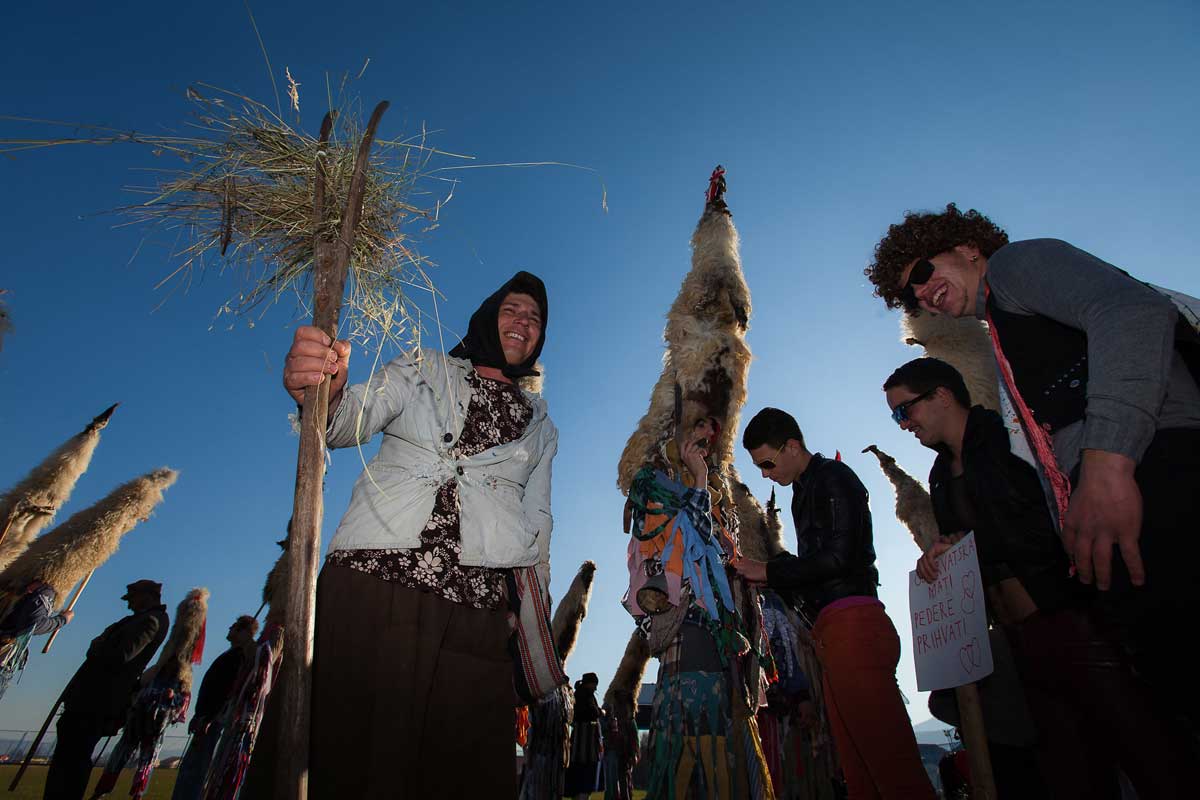
Nikola Belančić
Carnival Customs
The period between Christmas and Easter is celebrated as Carnival. It runs from Epiphany to Ash Wednesday, when Lent begins, the period preceding Easter marked by purification and abstinence. Carnival is marked by the so-called mačkare, a village carnival pageant consisting of only men dressed as different characters, the main including the did and the baba (an old man and an old woman). The did is usually at the head of the pageant and his sexual organ is either of rag or of wood. He runs after the baba and eventually they simulate intercourse. The most prominent in the carnival pageant are those dressed as the participants in a wedding procession, the wedding guests. The bridegroom is the only one not taking part in the carnival wedding procession. A day-long walk would take the merry pageant from one house to another, singing and avoiding the houses in mourning, continuing from one hamlet to another and even to another village. Fellow villagers used to compete who would make a better host to the mačkare, treating them to bacon and wine. Except for being folk-influenced, the mačkare displays the influence of the city, the Mediterranean and Central European customs, with the carnival figure of Krnje, Krnjuša, Karneval, etc. as indispensable to the carnival pageant. As the embodiment of all the evils marking the last year, the popular Krnje is at the end sentenced to death and burnt to everyone's joy.
Lent and Easter Customs
When the Carnival period is over, Lent begins featuring Palm Sunday and Holy Week as the most significant holidays. Palm Sunday is the Sunday before Easter. On the Saturday before Palm Sunday, it was a custom to pick spring flowers, most often violets, and when the Palm Sunday morning dawned, people would wash their face with water with the picked flowers. After that, it was customary to go to church, bringing a sprig of fir, olive or laurel to be blessed by a priest. On Maundy Thursday the ringing of church bells would stop, falling silent until Holy Saturday. Maundy Thursday was popularly known as cabbagey or green Thursday since on that day it was customary to eat wild cabbage and the unleavened pogača. On Good Friday in the morning, people were not allowed to do any kind of work, especially ploughing, except if they ploughed for their neighbours or fellow villagers. In the afternoon, they were allowed to work, but taking care not to hurt themselves and bleed, according to the church belief that on that day Jesus had been buried. For this reason, on this day especially people would drink red wine, according to the popular belief that wine was transformed into blood.
Good Friday was a day of fasting and it is even today considered by elders as an obligatory fast, so on that day people would eat food with no fat and paint Easter eggs with herbal paints. It was a custom to bring to church the baraban, a carved wooden stick, a switch, with which people used to hit on pews after the Mass so one part of the stick would break, whereas they would bring the other one with them. In case that, for example, a farm animal fell ill, people would hit on the ear of the animal with the baraban until it was bleeding. They used to believe that in this way a sick animal would regain its health. Finally, on Holy Saturday people would bring to church the pogača and boiled eggs, one for each member of a family, in order to be blessed, just like nowadays they bring eggs and the posvećenica or sirnica, sweet round Easter bread. The blessed food was the Easter breakfast, the first thing to eat on Easter Sunday. What especially made the youngest happy as well as those older, was Easter egg cracking, where the winner was the one who managed to crack more eggs than anyone else.
Midsummer Day Customs (24 June, the feast of Saint John the Baptist)
The most interesting custom in the summertime is the one related to the feast of Saint John the Baptist celebrated on 24 June, which means that it falls on the time of the summer solstice. It used to be marked by lighting a fire, the svitnjak, which explains the popular name of the feast, sv. Ivan Svitnjak. People would light the svitnjak in yards, in village guvna (sg. guvno, pl. guvna – a wide area on a family farm similar to a yard and usually shared by two families), at crossroads. All the village would gather around it, and the younger ones would then, to their as well as to the joy of those older, try to jump over the fire.
On this day, girls used to play love fortune-telling. Each for herself, they would pick daisies and try to tell if boys loved them or not by tearing petals, one by one, from a daisy. The custom of lighting the svitnjak represented an occasion where a village community would socialise, except for families in mourning. In the Cetinska Krajina Region, the feast of St John the Baptist used to be marked by holding a parish fête, the dernek, in the village of Grab. The custom of lighting a symbolic fire during the summer solstice was known to all the Slavic peoples, whereas the Christian Saint John is the equivalent to the Old Slavic God of the Summer Sun.
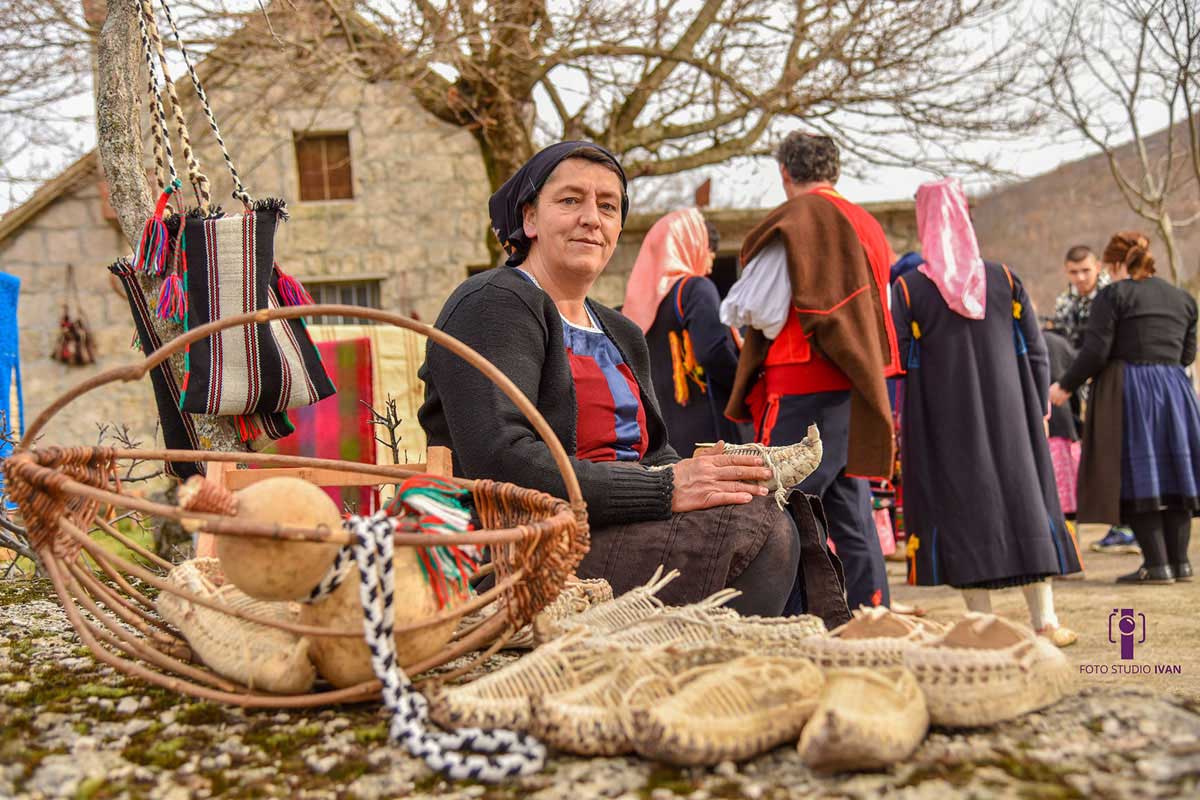
Ivan Alebić
Parish Fêtes (sg. dernek, pl. derneci)
Parish fêtes used to be occasions where the young fit for marriage used to meet. Most often they were held in order to celebrate feast days of patron saints of different places, such as Our Lady of the Angels in Imotski, Our Lady of the Rosary in Vrlika, St Luke in Otok near Sinj, St Philip and Jacob in Potravlje near Sinj, St Michael in Trilj near Sinj, etc. It was a general characteristic of the Sinjska Krajina Region that, as was the custom, a young man would give a present called the grotulja to a girl he liked. The grotulja is actually a row of holed walnuts arranged on a string, whose length varies, so there are the grotulje (pl.) from those the length of a necklace to those reaching the floor. As a result, a girl's success with boys used to be determined by the number and the length of grotulja she would get on the dernek.
Not only that the dernek used to be an occasion for young men to meet girls, but it also represented an opportunity for all the members of a village community to gather and socialise, those living in a community as well as those who had left their home in search of a better life. Pedlars, the so-called torbari, used to be very popular on feast days, selling small objects of all kinds – small wooden combs, pocket mirrors, needles, knitting thread, etc. Other goods sold included tobacco, the uštipci (long and thin pieces of fried batter), cattle, etc. Since the dernek used to be held in order to celebrate a patron saint, it also included a church service in a local parish church and a procession in which almost all the village took part.





